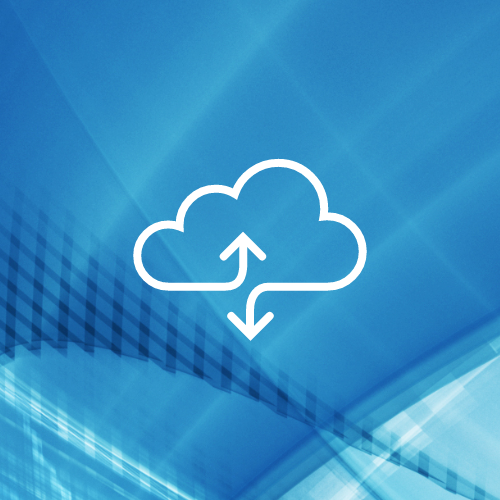Business models are evolving constantly in accordance with the emerging needs of the users and developing technology. The new buzz in town is the acceptance of SaaS. As time has passed the software industry has developed more powerful and robust tools to help businesses perform their day-to-day tasks and procedures with less aggravation.
SaaS stands for software-as-a-service. SaaS is one of the recent paradigm shifts in the software industry. In addition to the software industry, we can see its implications everywhere with almost every industry adopting and implementing SaaS to simplify business processes and tasks. The SaaS platform can also be considered as a way of delivering applications over the Internet through a subscription fee model rather than through traditional on-premises, licensed software models. Software-as-a-service is accessed through the Internet, eliminating complex computing infrastructure provisioning and maintenance tasks for organizations.
The advantages of SaaS have become increasingly beneficial. For instance, with every new development in SaaS subscription software, the dependence on IT staff is lessened. The less human intervention, the more efficient the processes. Similarly, if there is no human interruption while performing regular tasks, there is less of a chance to experience human errors. Just one of many reasons that organizations are adopting the SaaS model.
SaaS data protection for the public sector
Let’s focus on the public sector and its tentative approach to the adoption of the SaaS model. SaaS has established itself as a viable business model with CRM on-demand. Considering the adoption level for SaaS subscription software by private companies, we can imagine its benefits. However, the public sector is lagging behind in terms of implementing SaaS and still needs convincing.
Let’s focus on ten good reasons for the public sector to consider the switch to SaaS. Because why not?
- Affordable: The biggest reason behind the switch to the SaaS model is the cost effectiveness. It will help public sector organizations to cut their operational and maintenance costs. With SaaS, IT maintenance issues no longer become a problem for the software purchaser. Many businesses have spent a ton of money trying to fix bugs and issues with their systems, but SaaS takes all of those issues away as the provider of the software handles it on behalf of the client. Issues such as scaling, performance, uptime, general maintenance, and disaster recovery are all handled by the provider, meaning the business no longer needs to spend precious budget on software issues.
- Efficient: The cloud solution deployment time is significantly less compared to on-premise systems. No hardware cost means you do not have to spend additional time procuring and installing IT infrastructure and VPN access across multiple systems within your organization. You can add more users as your business grows without ever thinking about implementing or adding the hardware. Cloud-based systems are assembled efficiently to provide maximum network performance and are also adaptive to business needs, unlike on-premise software applications where speed and performance are business-critical.
- Flexible: SaaS subscription software is extremely scalable in terms of updates or new versions. Whenever there is a new update in the SaaS platform, the vendor or the supplier takes immediate action and implements it right away for clients.
- Accessibility: One of the most important features of SaaS is its easy access from any part of the world at any time. The SaaS platform is simple for users to access any and all important data with just a few clicks.
- Customization: SaaS allows organizations to easily customize applications per their needs and requirements without affecting the main infrastructure. Another advantage is that all upgrades are handled by the provider.
- Cloud architecture: SaaS is a cloud computing environment. Ownership of data is one that many companies – and vendors for that matter — have struggled to resolve. Data and encryption keys reside with the third-party provider, so if the unexpected happens and there is downtime, you can still access that data. It is still your data. SaaS helps to stay ahead of developmental and infrastructural transformations while keeping cost-containment.
- Liability: SaaS vendors are financially dependent to ensure the ongoing success of their SaaS services. This is a major motivating factor to go above and beyond providing services to their clients.
- Easy to deploy: SaaS runs on a cloud environment so it is simple to deploy. Unlike on-premise software where you have to deploy the hardware in order to run it with your processes.
- Minimal data loss: With SaaS, the risk of losing data is extremely rare. With real-time backups, data is readily available at all times. Data recovery is also covered allowing for disaster recovery strategies should the unexpected happen.
- Free trial: It is not unusual for an organization to make large up-front investments without even doing a software test — this is very risky. Most SaaS providers offer free trials before any type of service commitment.
Druva Data Resiliency Cloud for the public sector
Choosing the right SaaS provider is critical to the success of any organization. Druva has proven to be the right choice. With the Druva Data Resiliency Cloud, we provide you with the ability to advance your organization’s cyber, data, and operational resilience, eliminating hardware, software, and associated complexity — while also gaining visibility and protecting data across multiple clouds and on-premises. See what one of our customers had to say: State of California.
For more information, please visit Druva’s public sector data resilience page.
